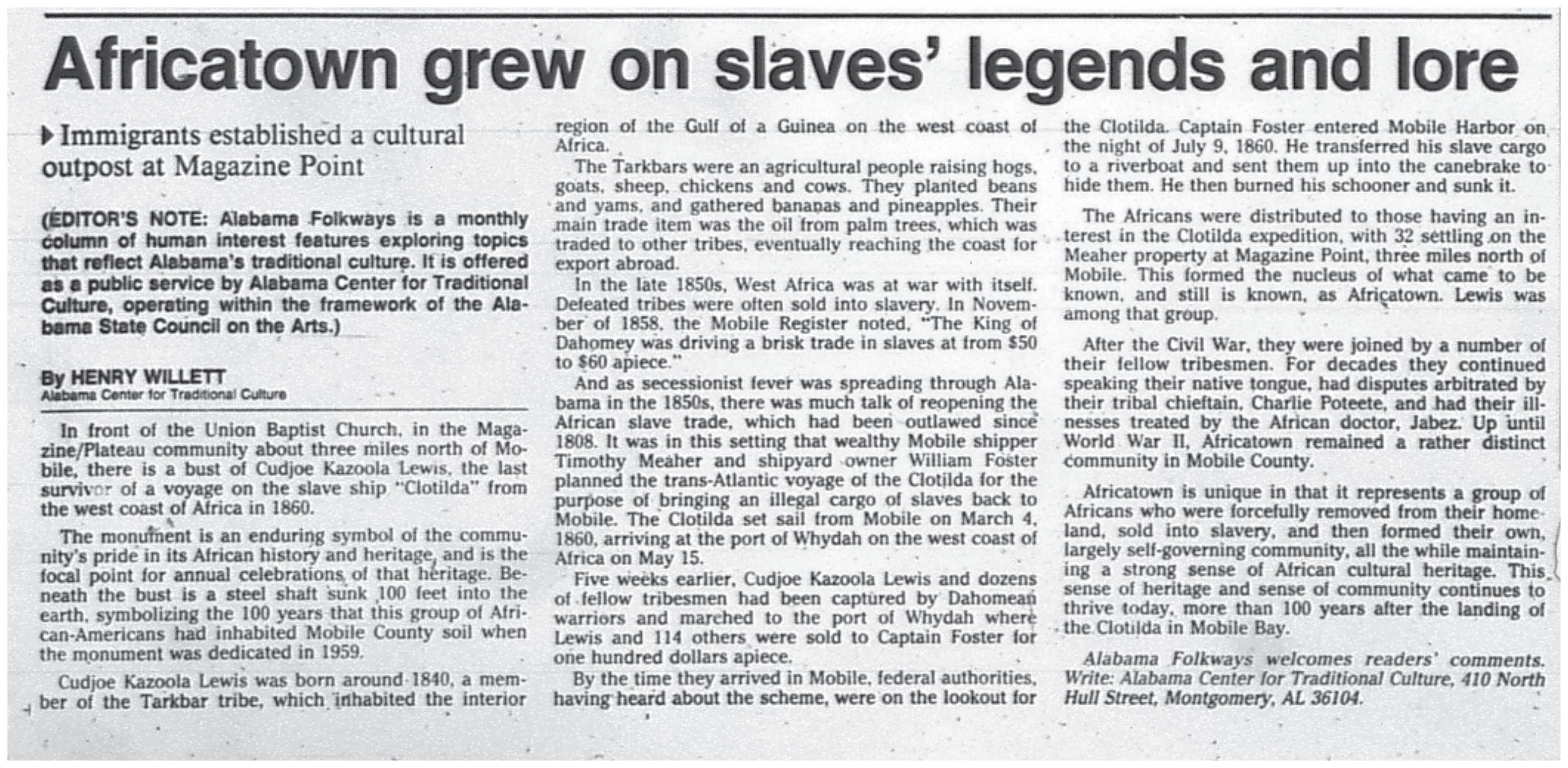30°44′7″N The hidden history of Africatown isn’t a wives’ tale. It’s time for the story to be told and accountability to be taken. | Story by Gracie King. Photos by Michael Dunn, and courtesy of Mobile Public Library.
A
s the thick, coastal fog of the Mobile Bay rolls in, a two-masted, 86 foot long boat made from yellow pine and white oak with a coppersheathed hull and packed to the brim with enslaved prisoners trudges through the dreary water. The creaking of the full slats and whistle of the wind disguises the dismal and puzzled wails of those trapped below the surface, anxiously awaiting the new world they’ll be later forced to serve. This is the gut-wrenching true story of the Clotilda and the community later forged from their resilient human spirit.
Africatown sits on the west bank of the Mobile River on the Mobile-Tensaw River Delta, just three miles north of downtown. This now 57-acre community was originally settled by 32 formerly enslaved West Africans, most of whom were illegally imported to the Mobile Bay on the Clotilda, the last known slave ship to arrive in America. A few years before the Civil War began, Timothy Meaher, a wealthy Mobile shipyard owner, drunkenly bet a group of businessmen that he could import enslaved people to the states from the Kingdom of Dahomey in Africa without being caught. Though this kind of activity became illegal in 1808 by The Act Prohibiting the Importation of Slaves, Meaher and co-conspirator Captain William Foster began building a
25 | DUE SOUTH |











